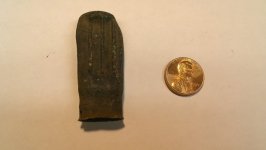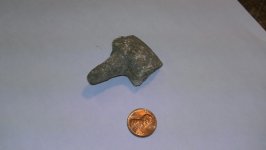coalminer
Full Member
I found both of these in the yard of the house where I grew up. I welcome any ideas as to what the heck they are... The brass receptacle thing looks like it could perhaps be a flattened lipstick case. The toothy object looks like ceramic or some other stoney material with embedded metal.



